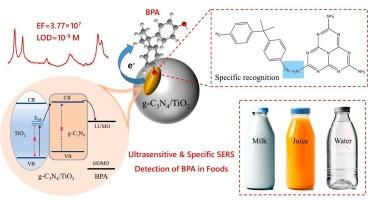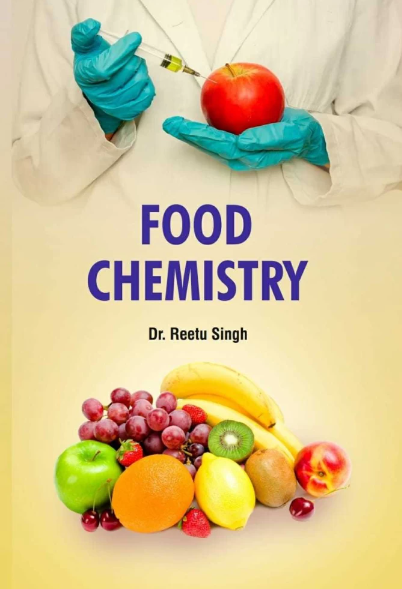A novel g-C3N4/TiO2 heterojunction for ultrasensitive detection of bisphenol a residues
IF 8.5
1区 农林科学
Q1 CHEMISTRY, APPLIED
引用次数: 0
Abstract
Semiconductor heterojunction with functional integration can be used as an excellent matrix for the ultrasensitive detection of bisphenol A (BPA) with low molecular affinity. Here, a simple, low-cost and sensitive surface-enhanced Raman scattering (SERS) strategy using g-C3N4/TiO2 heterojunction as substrate was presented for detection of BPA residues in foods. The g-C3N4/TiO2 achieved specific chemisorption for target analyte by the formation of intermolecular H-bond between g-C3N4 and BPA. And, a high-efficiency carrier separation in TiO2 induced by heterostructure could be achieved for charge transfer between the substrate and molecule by a “donor-bridge-acceptor” charge-transfer mode. Due to the synergistic/collaborative contributions of two monomers in heterojunction, the SERS enhancement factor was as high as 3.77 × 107. The detection limit of BPA residues in foods (milk, juice and drinking water) was as low as 10−9 mol·L−1, far below the EU standard. The developed substrate also exhibited excellent stability and anti-interference capability.

用于超灵敏检测双酚 A 残留的新型 g-C3N4/TiO2 异质结
具有功能集成的半导体异质结可用作超灵敏检测低分子亲和性双酚 A(BPA)的优良基质。本文介绍了一种以 g-C3N4/TiO2 异质结为基底的简单、低成本和灵敏的表面增强拉曼散射(SERS)策略,用于检测食品中的双酚 A 残留。g-C3N4/TiO2 与双酚 A 之间形成的分子间 H 键实现了对目标分析物的特异性化学吸附。此外,异质结构在 TiO2 中诱导的高效载流子分离可以通过 "供体-桥-受体 "电荷转移模式实现基质与分子之间的电荷转移。由于异质结中两种单体的协同/合作贡献,SERS 增强因子高达 3.77 × 107。食品(牛奶、果汁和饮用水)中双酚 A 残留的检测限低至 10-9 mol-L-1,远远低于欧盟标准。所开发的基底还具有优异的稳定性和抗干扰能力。
本文章由计算机程序翻译,如有差异,请以英文原文为准。
求助全文
约1分钟内获得全文
求助全文
来源期刊

Food Chemistry
工程技术-食品科技
CiteScore
16.30
自引率
10.20%
发文量
3130
审稿时长
122 days
期刊介绍:
Food Chemistry publishes original research papers dealing with the advancement of the chemistry and biochemistry of foods or the analytical methods/ approach used. All papers should focus on the novelty of the research carried out.
 求助内容:
求助内容: 应助结果提醒方式:
应助结果提醒方式:


